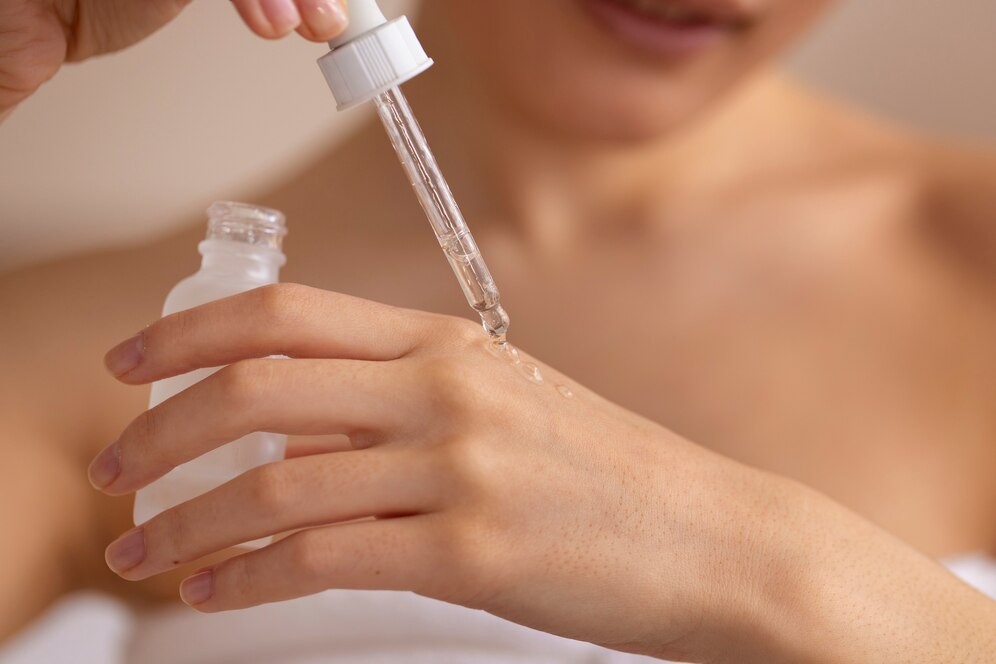Salicylic acid has become a popular ingredient in skincare, especially in products designed for exfoliating and acne treatment.
It is commonly available in forms such as serums, facial cleansers, toners, and more. But is it safe to incorporate salicylic acid into your daily routine?
Benefits of Salicylic Acid for Skin
Salicylic acid, an active compound of beta hydroxy acid (BHA), is found in over-the-counter products like facial cleansers, toners, and serums. For targeted treatments, doctors can prescribe salicylic acid at concentrations higher than 2%.
Bacteria, dirt, sebum, and dead skin cells can build up on the surface of the skin and clog pores. This compound is effective at penetrating pores to remove bacteria, oil, and dead skin cells, making it ideal for acne treatment and skin exfoliation.
The benefits of salicylic acid include:
- Exfoliating dead skin cells: It promotes skin cell turnover, improving dullness and texture.
- Cleaning pores: The ability of salicylic acid to dissolve in oil allows it to deeply penetrate pores, preventing blackheads.
- Reducing excess oil: By penetrate the surface of the skin to clean excess sebum from the pores, it helps manage oily skin.
- Managing acne: Salicylic acid can reduce inflammation and lower the risk of breakouts.
- Minimizing pores: Its astringent properties can tighten skin, reducing the appearance of pores.
Can Salicylic Acid Be Used Daily?
Salicylic acid is available in toners, gels, cleansers, and serums. For acne treatment, the dosage and frequency depend on the product concentration and your skin’s needs. Depending on the severity of your acne, some products can be used every day or once every 1-2 days.
Here’s a general guide for using salicylic acid:
- Gel (2–7%): Use once daily.
- Lotion (2%): Apply 1–3 times daily.
- Ointment (3%): Use as needed.
- Toner pads (0.5–2%): Use 1–3 times daily.
- Soap (0.5–3%): Use as needed.
- Toner (0.5–2%): Apply 1–3 times daily.
To avoid irritation, follow product instructions or consult a doctor. If you experience signs of irritation, stop using the product until your skin recovers.
Safe Use Tips for Salicylic Acid
Salicylic acid is generally safe with minimal side effects when used as directed. Potential side effects include:
- Dry skin
- Irritation
- Redness
- Warmth sensation on the skin
- A stinging sensation.
You can do a patch test before regular use by applying it to your jawline and monitoring for any reaction, such as redness, itching, or dryness. If such reactions occur, you should stop using it.
The safest way to use salicylic acid is to use it according to the instructions for use or a doctor's prescription. For safe use:
- Avoid applying salicylic acid around the eyes, nose, or mouth.
- Do not ingest salicylic acid.
- Avoid using it on broken or infected skin.
- Refrain from combining it with abrasive products like tretinoin or benzoyl peroxide, as this can increase irritation risk.
Salicylic acid is a beneficial ingredient for tackling skin issues like acne and dullness. For questions about using salicylic acid or any skin concerns, consult a dermatologist or use the consultation feature in the AI Care app, available on the App Store and Play Store.
Want to explore health tips, first aid, and other remedies? Click here!
- dr Nadia Opmalina
Shunatona, B. (2024). Salicylic Acid Is the Acne-Fighting Ingredient Derms Want You to Use—Here's Why. Available from: https://www.byrdie.com/salicylic-acid#
Frothingham, S. (2023). Can Salicylic Acid Help Treat Acne?. Available from: https://www.healthline.com/health/skin/salicylic-acid-for-acne
Wisner, W. (2024). Benefits of Salicylic Acid For Skin. Available from: https://www.health.com/salicylic-acid-8624272#
Multum. C. (2024). Salicylic acid topical. Available from: https://www.drugs.com/mtm/salicylic-acid-topical.html
Mayo Clinic. Salicylic Acid (Topical Route). Available from: https://www.mayoclinic.org/drugs-supplements/salicylic-acid-topical-route/description/drg-20066030












